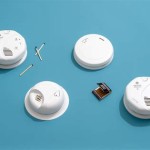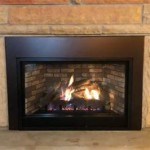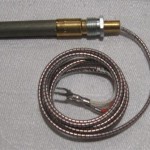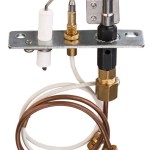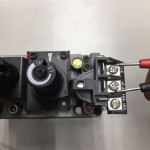Fireplace Glass Replacement: A Comprehensive Guide
Fireplaces serve as focal points in homes, providing warmth and ambiance. A crucial component of many fireplaces, particularly those with enclosed fronts, is the glass. This glass is specifically designed to withstand high temperatures and protect the surrounding environment from sparks and embers. However, over time, fireplace glass can become damaged, cracked, or discolored, necessitating replacement. This article provides a comprehensive guide to understanding fireplace glass replacement, covering the types of glass used, reasons for replacement, the replacement process, safety considerations, and maintenance tips.
Fireplace glass is not the same as standard window glass. It is typically made of ceramic or tempered glass, both of which are engineered to withstand extreme heat. The type of glass used in a fireplace will depend on the fireplace's design and the manufacturer's specifications. Understanding the characteristics of each type is essential for selecting the appropriate replacement glass.
Ceramic glass, often referred to by brand names like "Pyroceram" or "Neoceram," offers exceptional heat resistance. It can withstand continuous temperatures up to 1300°F (704°C) and intermittent temperatures even higher. This makes it ideal for high-heat applications like wood-burning stoves and fireplaces. Ceramic glass also features very low thermal expansion, meaning it expands and contracts minimally with temperature changes, reducing the risk of cracking. It is generally more expensive than tempered glass but offers superior performance in high-heat situations.
Tempered glass, on the other hand, is produced through a heat-treating process followed by rapid cooling. This process significantly increases its strength and resistance to breakage compared to regular glass. While not as heat-resistant as ceramic glass, tempered glass can withstand temperatures up to around 400-500°F (204-260°C). It is often used in gas fireplaces or electric fireplaces where the heat output is lower. When tempered glass breaks, it shatters into small, relatively harmless pieces, minimizing the risk of serious injury. This safety feature makes it a common choice for many applications, including fireplace doors.
Selecting the correct type of replacement glass is paramount. Using standard window glass is extremely dangerous and can lead to catastrophic failure and potential fire hazards. Always consult the fireplace manufacturer's specifications or a qualified fireplace technician to determine the appropriate type of glass for your specific fireplace model.
Reasons for Fireplace Glass Replacement
Several factors can contribute to the need for fireplace glass replacement. Recognizing these issues early can prevent further damage and ensure the safe operation of the fireplace.
One of the most obvious reasons is physical damage. Cracks, chips, and breaks in the glass compromise its structural integrity and its ability to contain heat and sparks. A cracked glass panel can allow carbon monoxide to leak into the living space, posing a serious health risk. It can also allow embers to escape, increasing the risk of a house fire. Any visible damage should be addressed immediately by replacing the glass.
Over time, fireplace glass can become discolored or cloudy due to soot buildup, creosote deposits, and mineral deposits from burning fuel. While some discoloration can be cleaned, persistent clouding may indicate that the glass is deteriorating and needs replacement. Excessive discoloration can also obscure the view of the fire, diminishing the aesthetic appeal of the fireplace. Attempting to clean heavily discolored glass with abrasive cleaners can sometimes worsen the damage and hasten the need for replacement.
Another less obvious reason relates to the glass seal. Many fireplace doors have a gasket or seal around the perimeter of the glass. This seal helps to prevent air leaks and ensures proper combustion. If the seal is damaged or deteriorated, it can compromise the fireplace's efficiency and potentially allow carbon monoxide to escape. Replacing the glass along with a new gasket ensures a tight seal and optimal performance.
The Fireplace Glass Replacement Process
Replacing fireplace glass is a task that requires caution and attention to detail. While some homeowners may choose to undertake this project themselves, it is often recommended to hire a qualified fireplace technician to ensure the job is done correctly and safely. The following steps outline the general process.
The first step is preparation. Before starting, gather all necessary tools and materials. These typically include: new fireplace glass (of the correct type and dimensions), a screwdriver (appropriate for the screws holding the glass in place), a putty knife or scraper, heat-resistant gloves, safety glasses, and a new gasket or sealant (if required). Ensure the fireplace is completely cool before starting the replacement process. Never attempt to replace the glass while the fireplace is hot or even warm.
The next step involves removing the old glass. Carefully remove the screws or clips that hold the glass frame in place. These are often located around the perimeter of the glass. Once the fasteners are removed, gently pry the glass frame away from the fireplace door. If the glass is stuck, use a putty knife or scraper to carefully loosen it. Be extremely cautious to avoid breaking the old glass further, as broken glass can be sharp and dangerous. Once the frame is removed, carefully lift out the old glass panel and dispose of it properly, following local regulations for glass disposal.
After removing the old glass, clean the glass frame thoroughly. Remove any remaining debris, soot, or old sealant. Inspect the frame for any damage or corrosion and repair or replace it as needed. Apply a new gasket or sealant to the frame, ensuring a proper seal between the glass and the frame. This seal is crucial for preventing air leaks and ensuring safe operation.
Install the new glass by carefully placing it into the frame. Ensure it is properly seated and aligned. Reattach the glass frame to the fireplace door using the screws or clips that were removed earlier. Tighten the fasteners securely, but avoid over-tightening, which could crack the glass. Double-check that the glass is securely in place and that the gasket or sealant is properly compressed around the perimeter of the glass.
Safety Considerations and Maintenance
Safety should be the top priority when dealing with fireplaces and their components. Following proper safety procedures during the glass replacement process is crucial to prevent injuries and ensure the safe operation of the fireplace.
Always wear safety glasses and heat-resistant gloves when handling fireplace glass. Broken glass can be sharp and can cause cuts or abrasions. Heat-resistant gloves will protect your hands from any residual heat and from potential burns while handling the glass. Avoid touching the glass directly with bare hands, as oils and contaminants from your skin can affect the glass's performance.
Ensure adequate ventilation when working with fireplaces. Carbon monoxide can be present even in a cold fireplace, so it's important to work in a well-ventilated area. Open windows and doors to allow fresh air to circulate. If you have a carbon monoxide detector, make sure it is functioning properly before starting the replacement process.
After replacing the glass, perform a test burn to ensure the fireplace is operating correctly. Start with a small fire and gradually increase the size of the fire while monitoring the glass for any signs of stress or cracking. Check for any air leaks around the glass frame and ensure the gasket or sealant is properly sealed. If you notice any problems, extinguish the fire immediately and contact a qualified fireplace technician.
Regular maintenance is essential for extending the life of your fireplace glass and ensuring its continued performance. Clean the glass regularly with a fireplace glass cleaner specifically designed for this purpose. Avoid using abrasive cleaners, as they can scratch and damage the glass. Wipe the glass with a soft cloth or paper towel to remove soot and creosote buildup. Clean the glass when the fireplace is completely cool.
Inspect the glass regularly for any signs of damage, such as cracks, chips, or discoloration. Address any issues promptly to prevent further damage and ensure the safe operation of the fireplace. Check the gasket or seal around the glass regularly and replace it as needed to maintain a tight seal. These preventative measures are vital for keeping the fireplace running smoothly and safely for years to come.

Fireplace Glass Replacement Lancaster Paint

Fireplace Glass Replacement Wood Stove Gas
Fireplace Glass Installation Repair Demers

Fireplace And Wood Burning Stove Glass Replacement

Fireplace Glass Replacement Lancaster Paint

Fireplace Glass Replacement Me And My

Everything You Need To Know About Fireplace Glass Door Replacement Demers

Woodstove Fireplace Glass Experts In Wood Stove Replacements

Fireplace Glass Replacement How To Do It Yourself

Change Your Broken Fireplace Or Stove Glass Us
Related Posts

